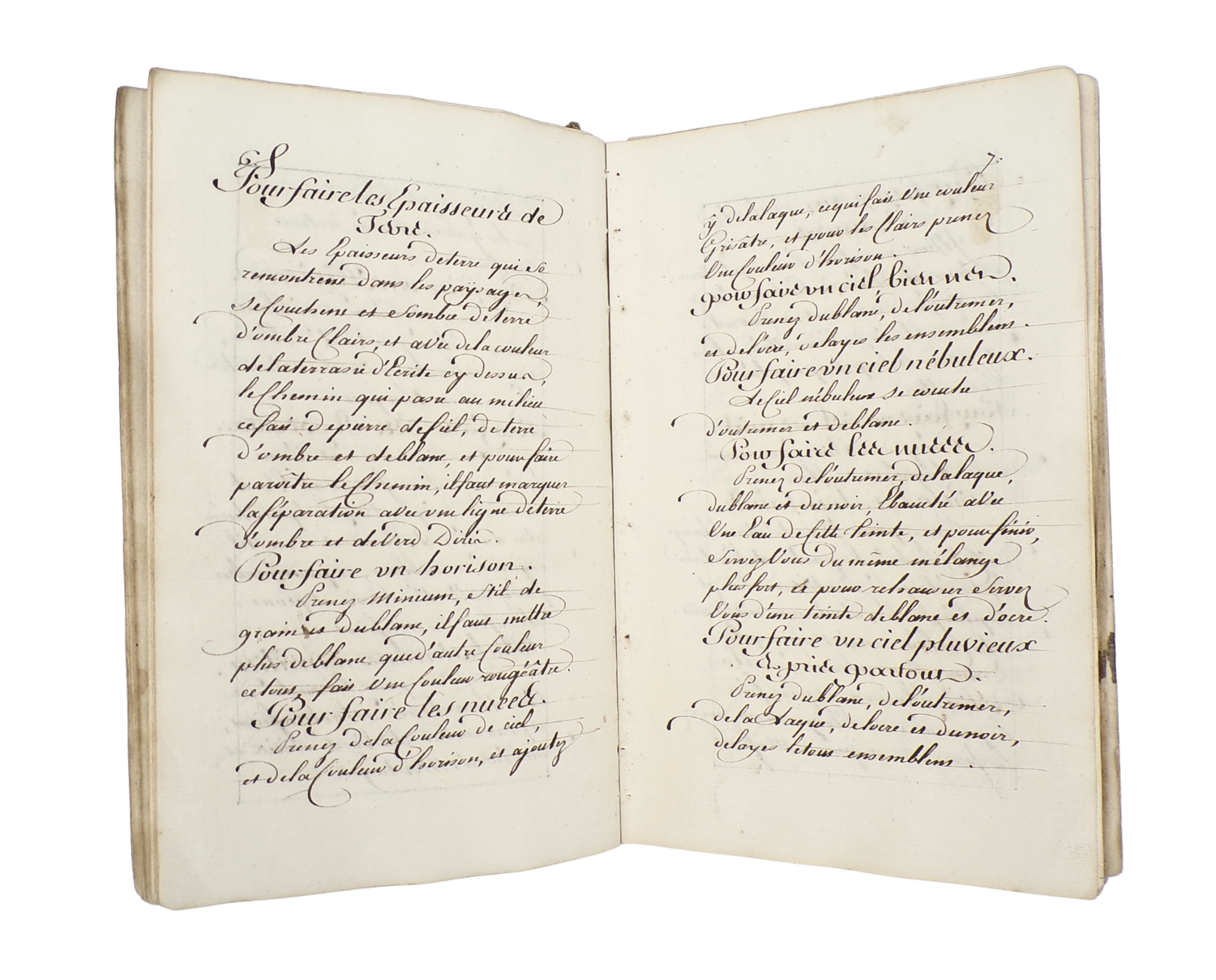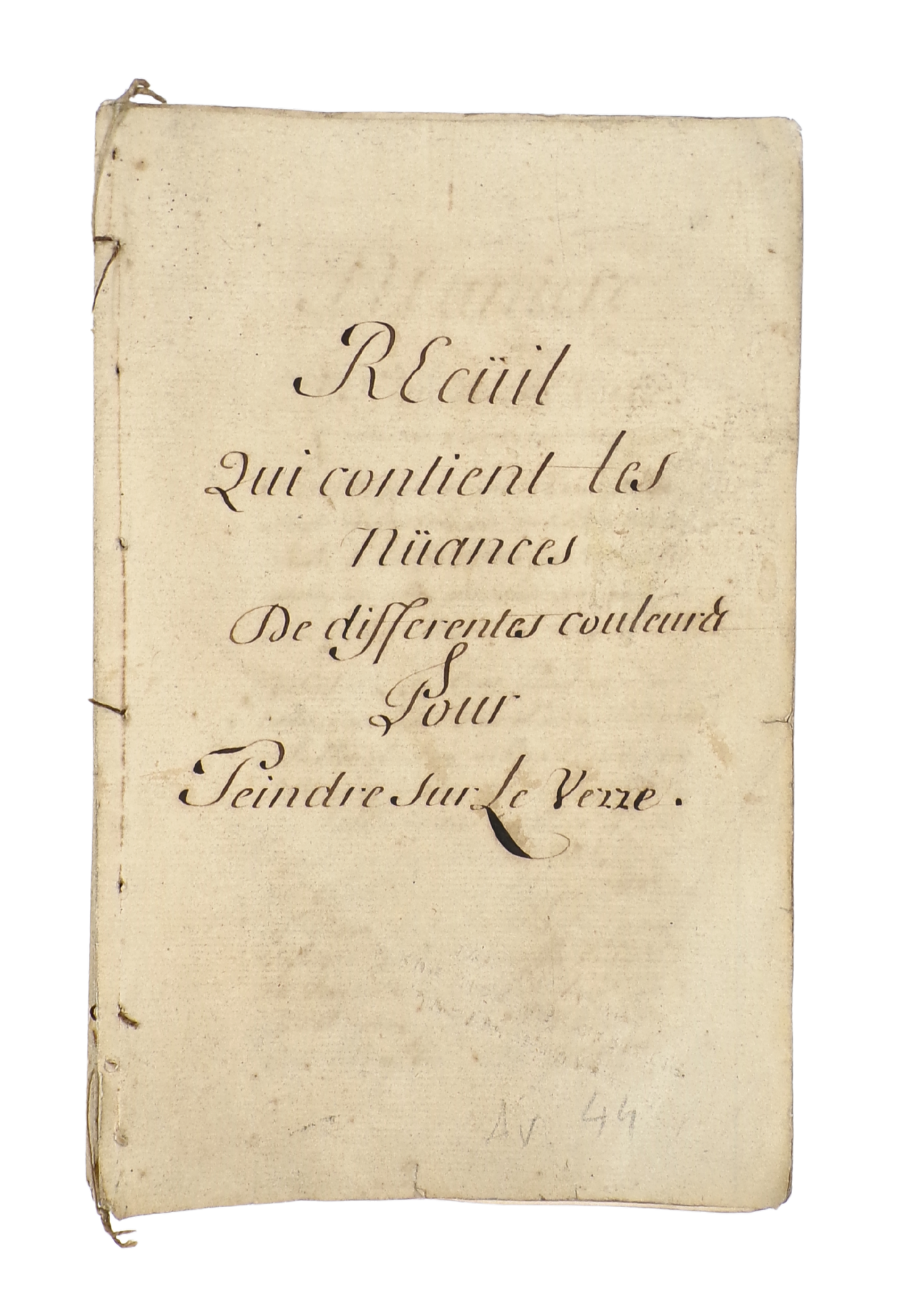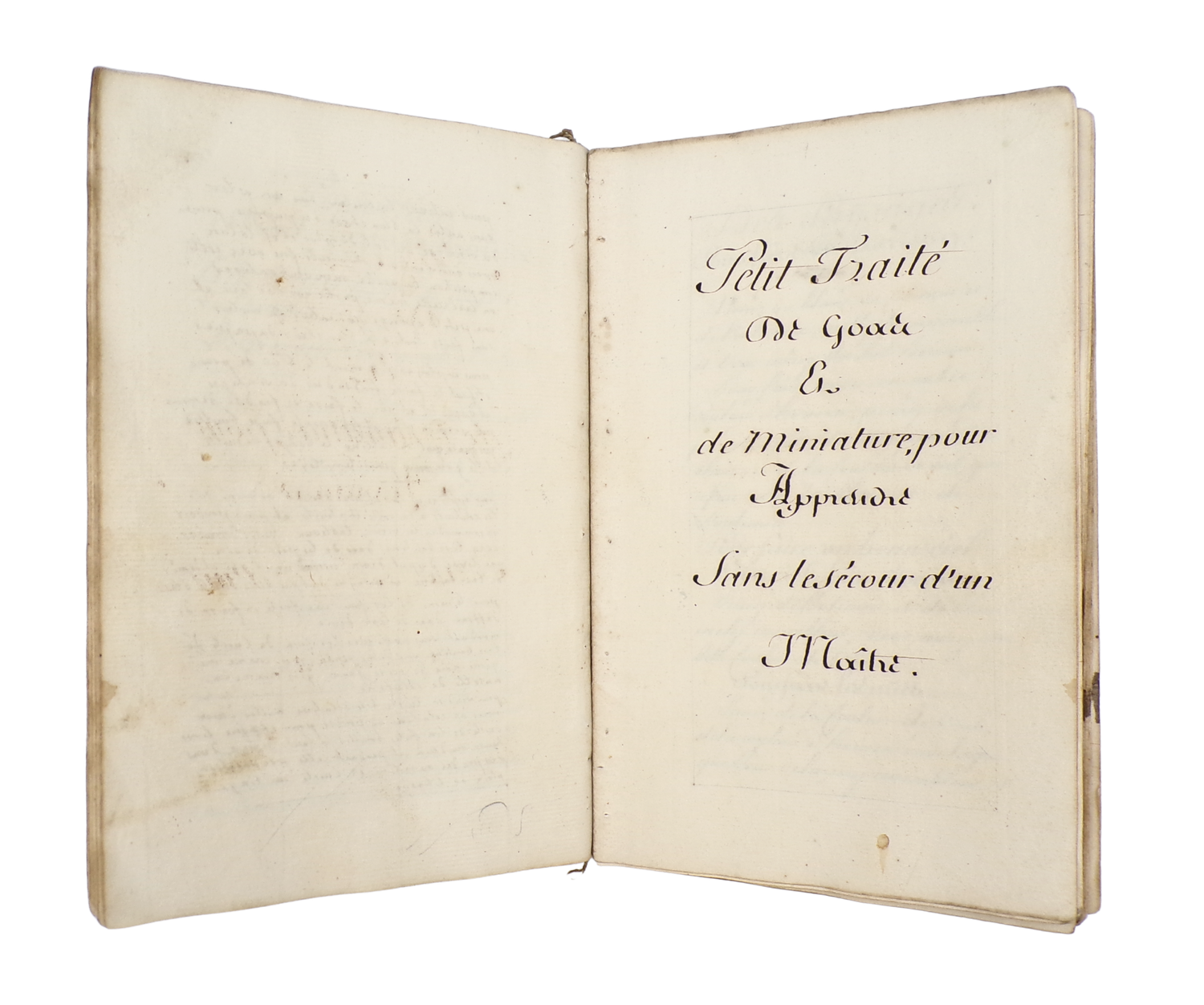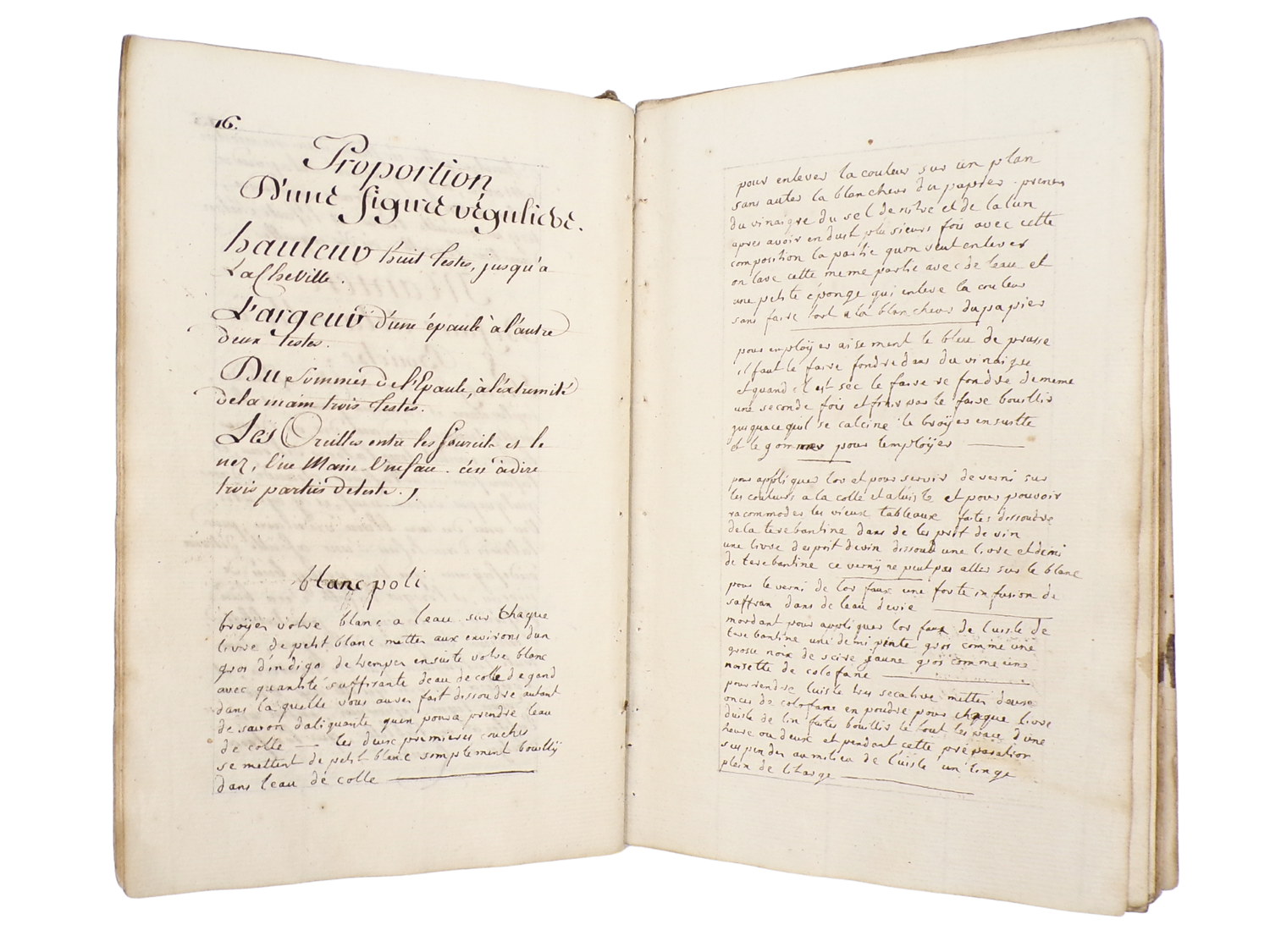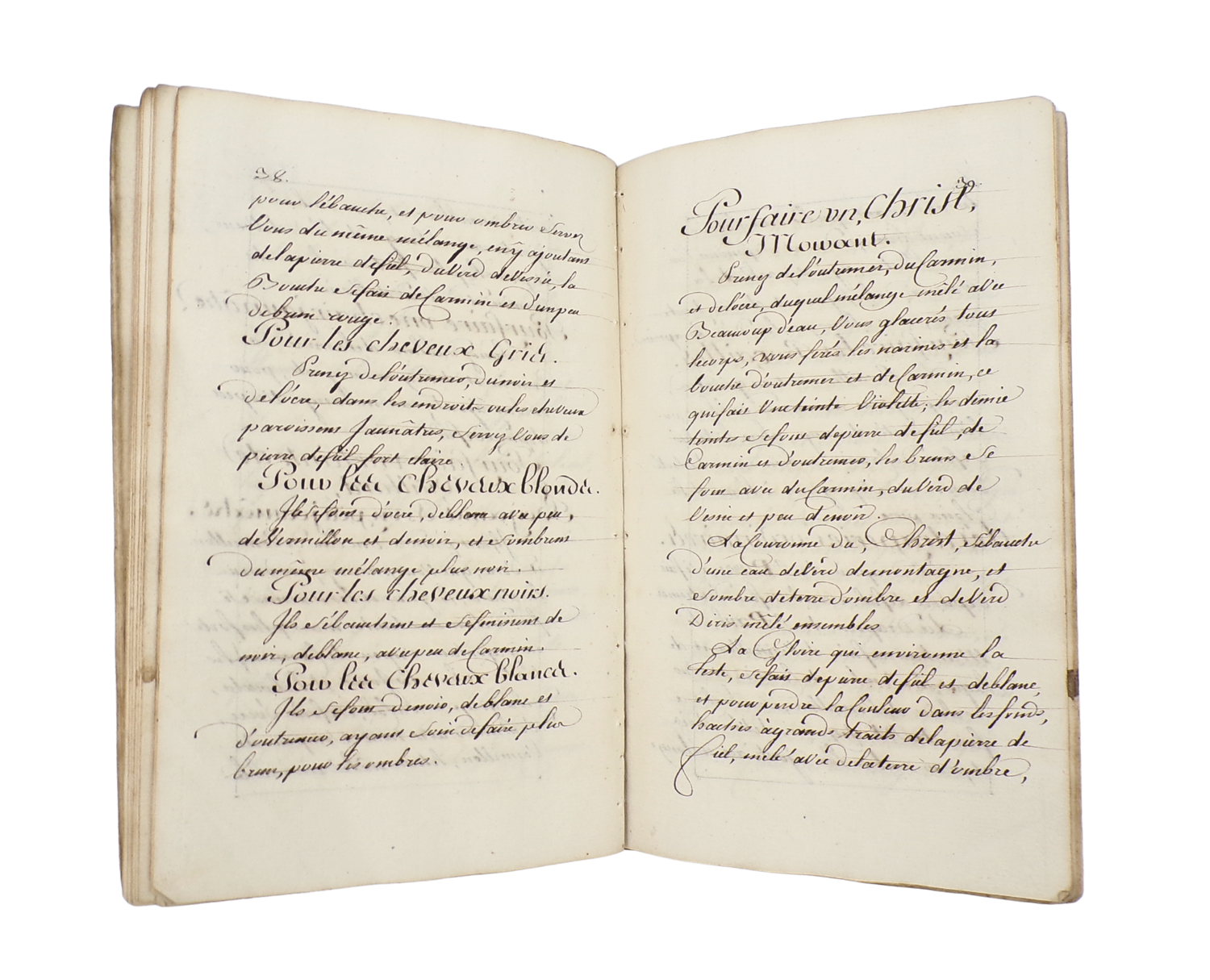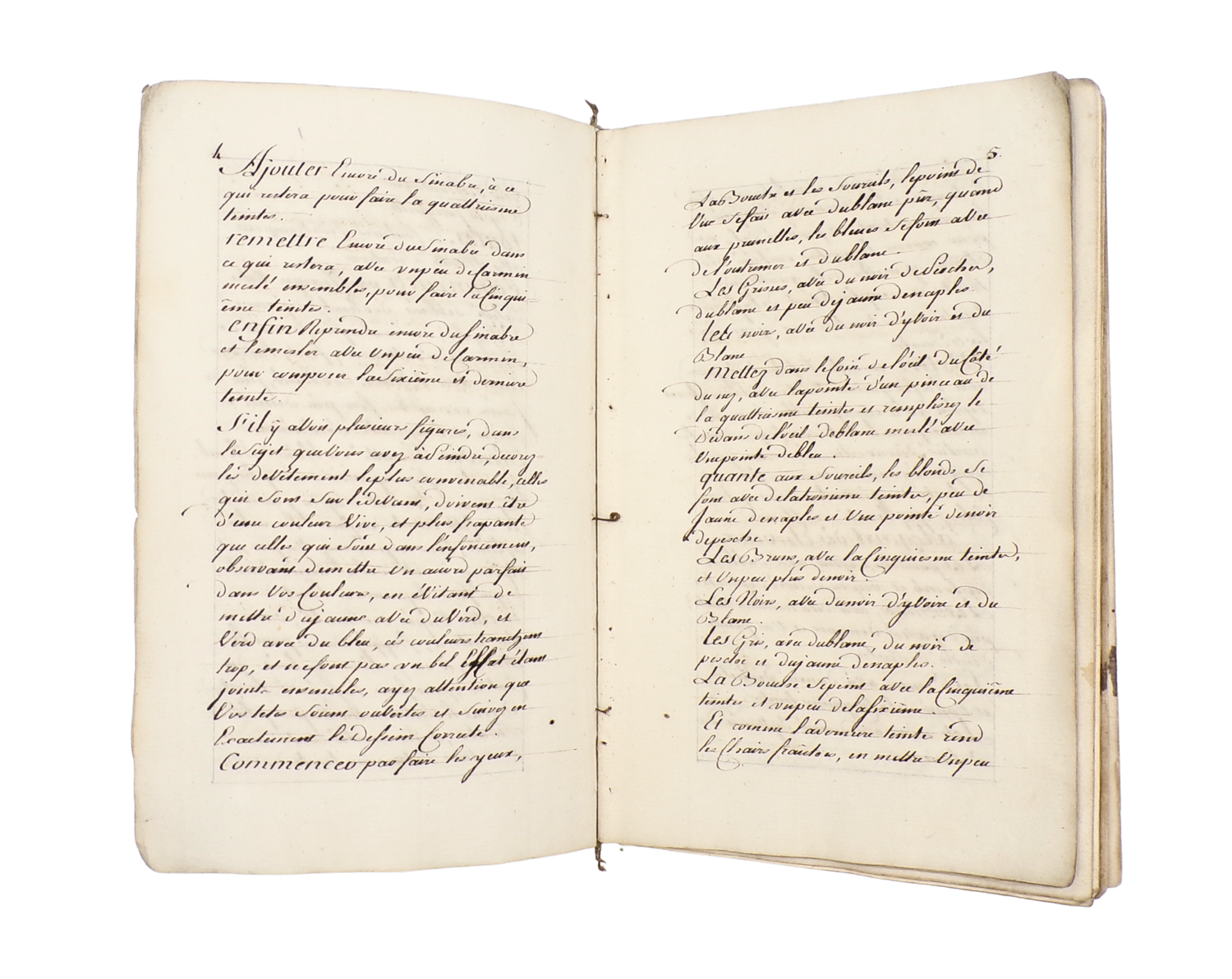Manuscript painting manual
- Regular price
- €2.800,00 EUR
- Regular price
-
- Sale price
- €2.800,00 EUR
- Unit price
- per
RESERVED
Recüil qui contient les nüances de differentes couleurs pour peindre sur le verre.
[and]
Petit traité de goût et de miniature, pour apprendre sans le sécour d’un maître.
France, mid 18th century.
8°, 18 x 11,5 cm. [1], [1 blank], 16, [1], [1 blank]; [1], [1 blank], 78 pp. Manuscript in ink on paper. Watermark "D. & C. Blauw" (variant of Churchill 194): mid-18th century.
Sewn, no covers.
A carefully written manuscript painting manual, it combines material drawn from printed authorities with the compiler’s own observations. It comprises two parts: the first, a concise recueil of colour shades for glass painting, the second a more extensive instructional treatise on miniature painting. The handwriting is consistent throughout, except at the close of the first part, where a second hand continues with the section headed blanc poli.
We have not traced a direct source for the first part, but its structure is similar to that of the various published manuals circulating at the time. The second treatise is structurally based on Catherine Perrot’s Les leçons royales, ou La manière de peindre en mignature les fleurs et les oyseaux (Paris, J.-B. Nego, 1686), particularly its earliest edition, as it preserves colour terms such as vermillon and outremer, which were altered in later printings. While the overall structure of Perrot’s text is followed, the manuscript departs in phrasing and wording, adapting rather than copying, and thus represents a personal reworking of established models.
The work gives recipes for pigment preparation and instructions for their use and application across a wide range of subjects. Individual sections, often introduced with formulaic headings (Pour faire…, Manière de…), cover the preparation of pigments (vermilion, carmine, bitumen, terre de Sienne, terre d’ombre brûlée, vert de vessie, bleu d’Inde), the handling of shading and tonality, atmospheric effects such as skies and clouds, architectural features including faux marble, animals, figures, and flesh tones, even ambitious figurative subjects such as the figure of a dying Christ. Technical processes appear alongside artistic instruction: painting on glass, preparing adhesives, or producing a smooth white ground (blanc poli).
With its calligraphic titles, orderly layout, and two distinct hands, the work appears conceived as a study manual or aide-mémoire for an amateur or student intent on learning “without the help of a master.” It provides valuable testimony to the circulation and adaptation of painters’ technical knowledge from printed treatises into private manuscript practice in eighteenth-century France.
Condition: sewing wire mostly gone, resulting in five loose quires. Front and back leaves are toned, spotted and slightly creased. Blind stamped ex-libris of Justin Bourey on toned front leaf. Minor marginal spotting inside. Otherwise in good condition.
Couldn't load pickup availability
Share
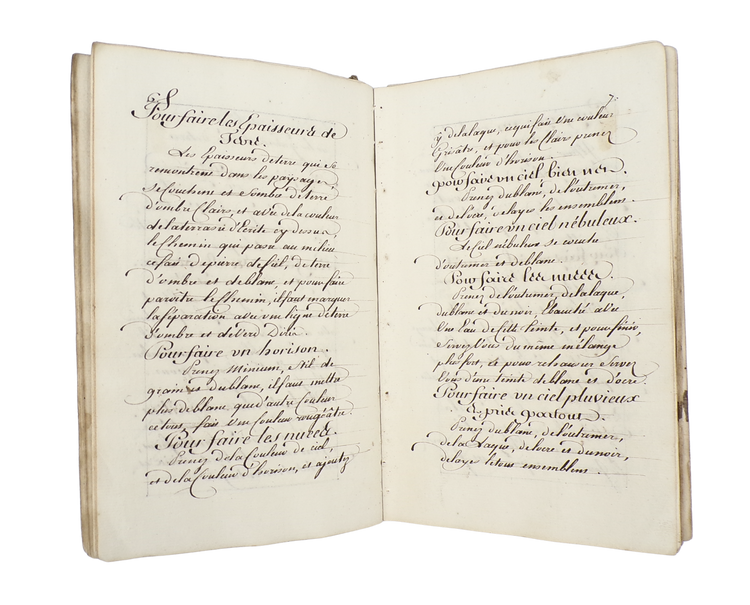
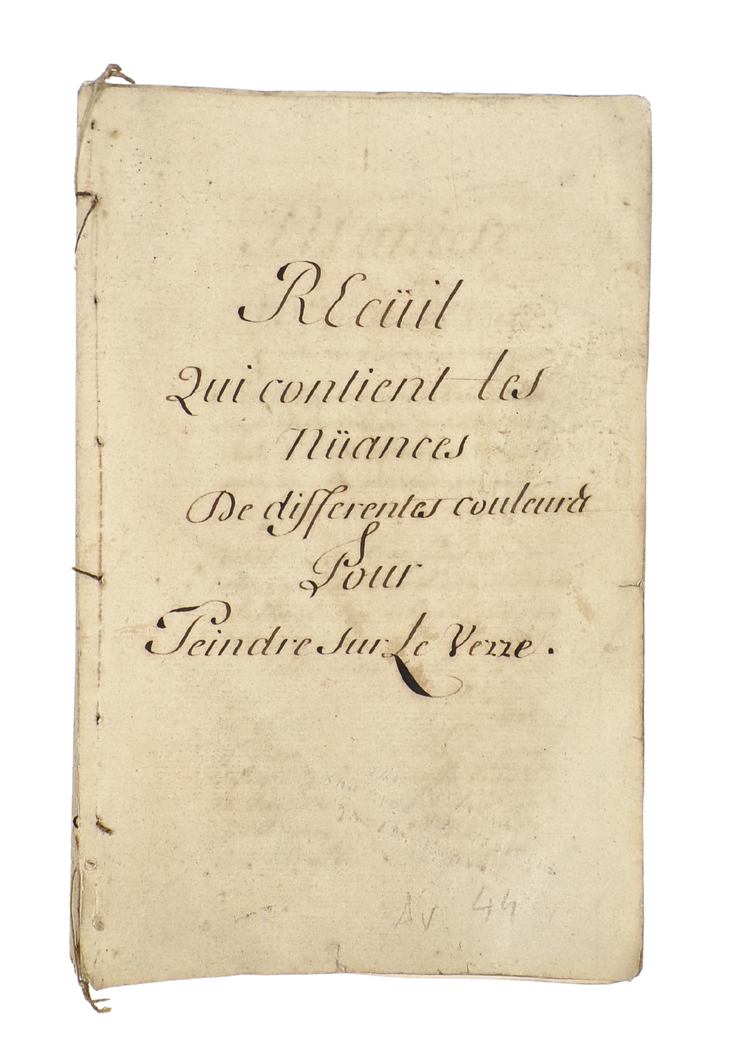
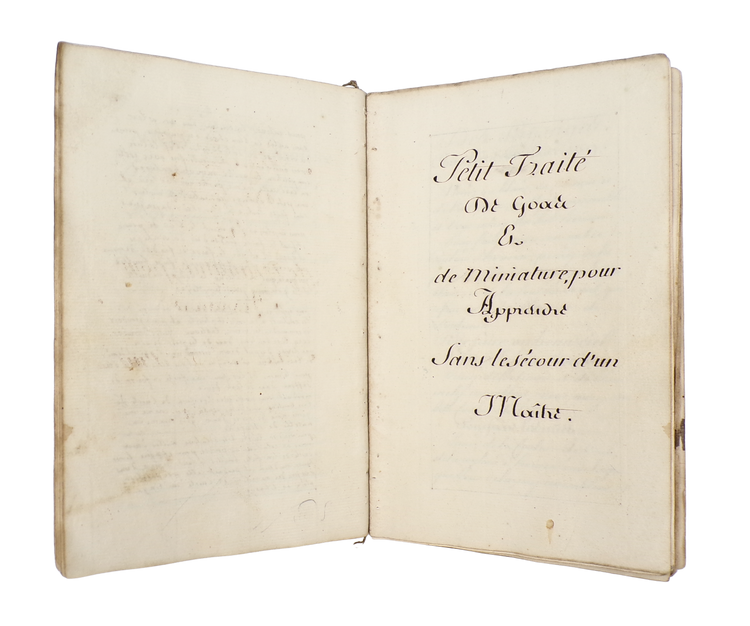
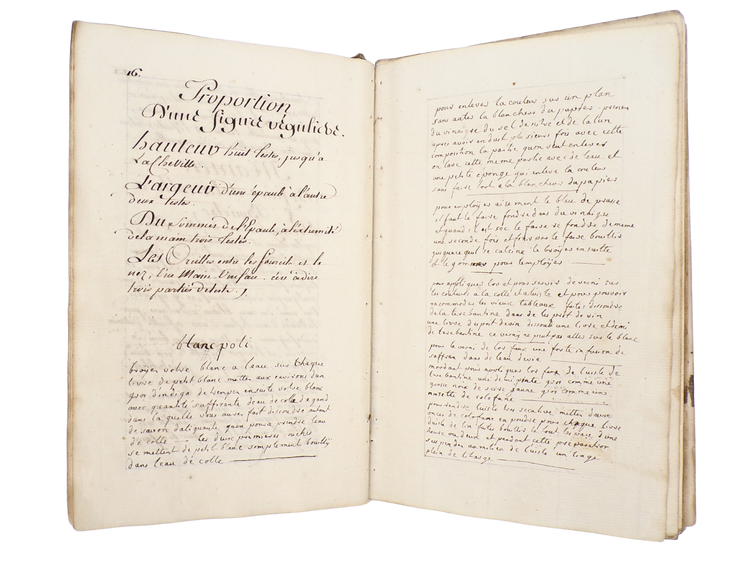
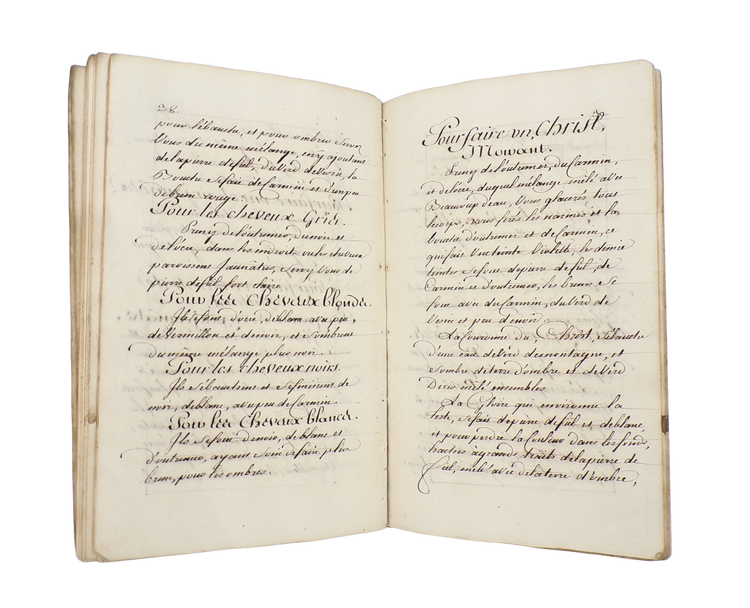
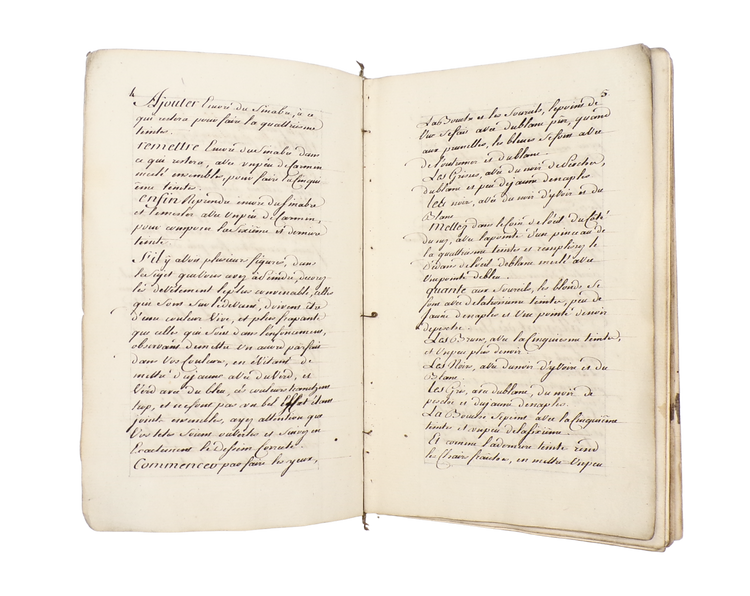
Contact
Email: hugo@artemrarebooks.com
Phone: +31651042297
Visit us on appointment at:
Former US Embassy
Lange Voorhout 102
2514EJ
The Hague (The Netherlands)
Shipping address:
Nannie van Wehlstraat 51
2548MN
The Hague
The Netherlands

